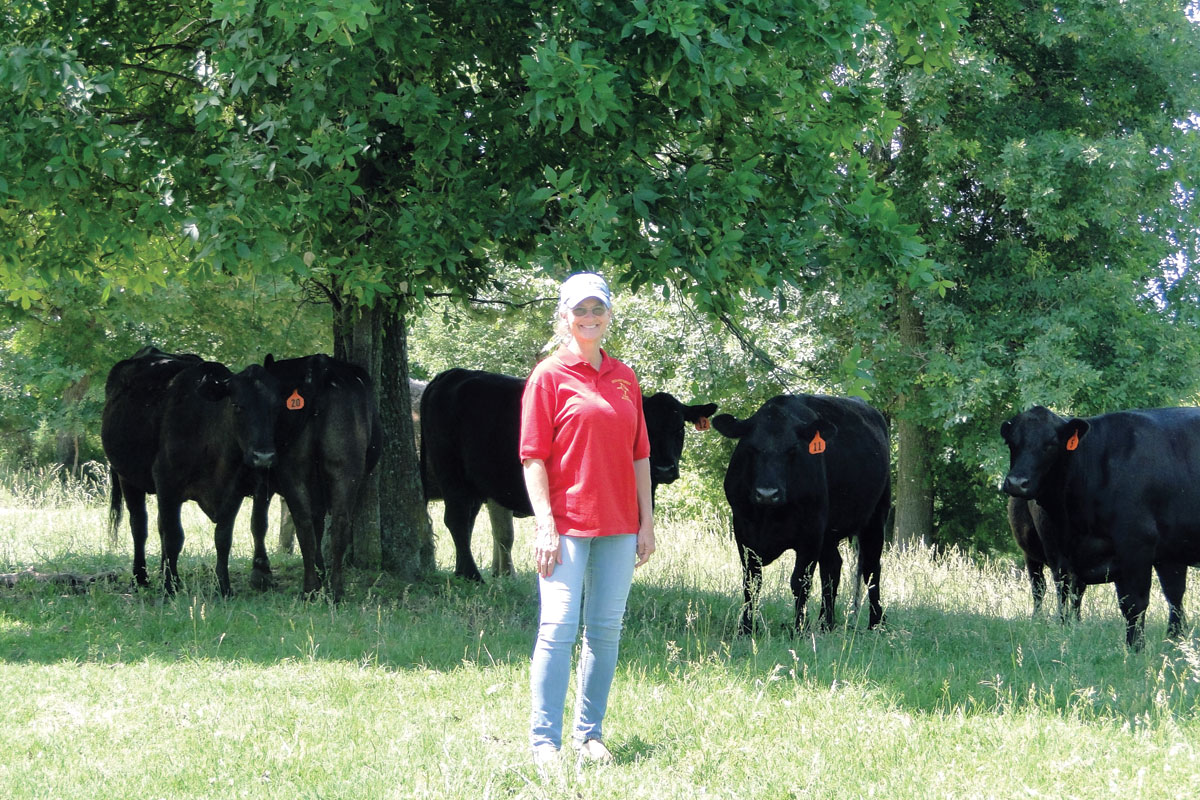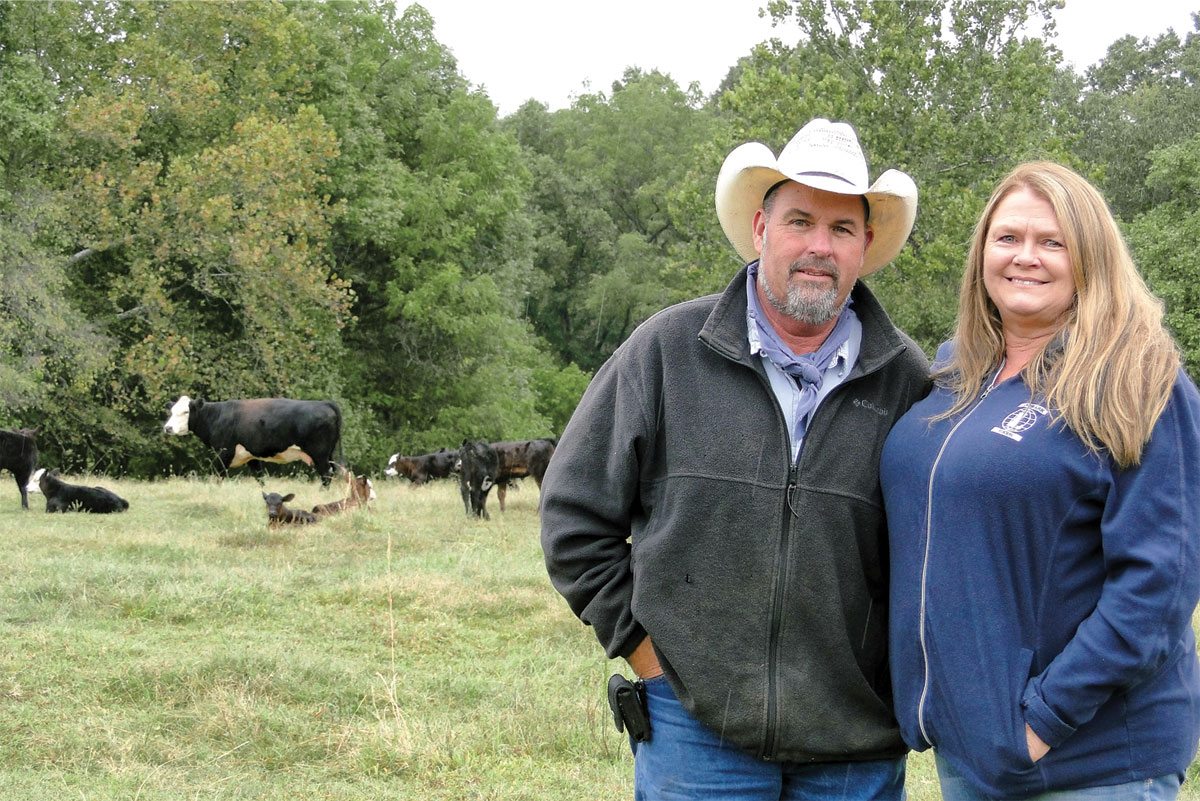
Wisconsin native retires to Arkansas and begins her own livestock operation
This is the story of Ann Evans of Yellville, Ark., a woman determined to find a profitable second career after retiring in New Mexico where she had managed a 60-condo timeshare resort. All her undone projects were done and her kids were grown. She needed a new focus.
Ann was born in Wisconsin into a family whose roots go all the way back to the original Thirteen American Colonies and the founding Wisconsin families.
Her parents ran a dairy farm and also raised turkeys. Though she was forced to move when very young, the call of the land had already claimed her. Her father’s farm was purchased by her aunt and uncle, so she was able to return every summer.
When her daughter Thea and son Skyler were children, Ann wanted a life for them that offered more than popcorn and TV shows. She wanted them to experience the rural lifestyle and value system she so cherished. The result was a decision to purchase a 17-acre spread near her career in New Mexico on which she reserved 6 acres for raising alpacas. Though she knew nothing about the elegant creatures, she quickly learned. Although alpacas were expensive at the time because they were in such high demand, Ann successfully “went all in” and especially appreciated her “little girls.”
A while after retiring from alpacas and the resort, Ann settled on 870 acres outside of Yellville where she has raised goats, sheep and cattle. As with the alpacas, she had much to learn and dove in by researching, attending numerous Extension Service seminars and recently attending Annie’s Project, a six-week Extension Service pilot program.
“That course changed everything,” she said. “I realized I had been successful with alpacas because my focus was precise but here that narrow focus had eroded into a shotgun blast with buckshot scattered all over from gobbling knowledge indiscriminately and experimenting with that knowledge”
Ann admited her goat venture was disappointing and not successful. She switched to hair sheep which she added to her existing fall calving commercial Angus cow/calf operation. Though she still raises both sheep and cattle, she feels “chained to a post” due to year-round time demands, especially during birthing seasons when she wants to have eyes on every animal at least once a day. She also feels the ranch’s current operation combination is more than she can handle by herself and still make a profit.
“I have used government programs multiple times for cross fencing, water lines, pond waterers and drought relief,” Ann explained. “I also had help restructuring debt amassed during the first drought. I couldn’t survive in agriculture without their help.”
Since moving to Arkansas in 2010, Ann has gained a tremendous amount of practical knowledge from how to work cattle to how to navigate troubled financial waterers to learning how to build and develop infrastructure. She has also learned that medium-framed cows are more profitable due to reduced feed costs and other factors of economy. She changed her feeding method after being almost trampled once by refurbishing old 12-foot wooden troughs with three-quarter inch plywood bottoms. She places as many troughs as she needs in a line and then safely walks in the middle distributing feed at both ends thus keeping herself away from pushing cows. Additionally, Ann found working the herd more often and more quietly to be less traumatic and therefore better for her cattle.
“I’ve been complemented many times on how gentle, quiet and easy to handle my cows are,” Ann said.
One of her most profitable discoveries, verified by testing, has been buying high-quality hay which requires little to no additional inputs.
The result of everything she has learned is finding a niche she believes will meet her requirement of making a profit in an operation she can handle herself while having more freedom to travel and pursue other interests that have been on hold for eight years.
Ann is in the process of replacing her sheep and cow/calf operation with a commercial Angus/Red Angus heifer development program so she can focus once again on her “little girls.” She wants to buy quality groups of weaned heifers, develop them with attention to detail, AI them to bulls in the top 20 percent of their breed in maternal traits, stayability and with an additional emphasis on carcass merit. The final product is a pregnant, third-stage, fall-calving heifer that will remain in her customer’s herd for years to come. According to Ann, many producers prefer big, frame cows believing that’s how you get 600 pound-plus calves, but Ann prefers medium frame cows that produce 550 to 600 pound calves at weaning. These more moderate cows are more efficient because of their size and produce calves that are 40 to 50 percent of the weight of momma at weaning which is difficult to economically do with a 1,400-pound cow. A critical factor in her new operation will be to DNA test prospective heifers rather than using sire EPDs alone. She feels sire EPDs give only half the story of the heifer, while DNA testing is on the actual animal thereby producing a more science-based “educated” guess.
Ann’s business background honed her ability to analyze. Her success with alpacas demonstrated an ability to learn livestock production and to meticulously follow successful protocols. Her time in Arkansas proved her willingness to learn, to move on from mistakes, and her ability to run livestock on her own. She is eagerly anticipating this new venture.






